Intel Unveils Lunar Lake Architecture: New P and E cores, Xe2-LPG Graphics, New NPU 4 Brings More AI Performance
by Gavin Bonshor on June 3, 2024 11:00 PM ESTIntel Lunar Lake: New P-Core, Enter Lion Cove
Diving straight into the Performance, or P-Core commonly referred to, has had major architectural updates to increase power efficiency and performance. Bigger of these updates, Intel needed to comprehensively update its classic P-core cache hierarchy.
Key among these improvements is a significant overhaul of Intel's traditional P-core cache hierarchy. The fresh design for Lion Cove uses a multi-tier data cache containing a 48KB L0D cache with 4-cycle load-to-use latency, a 192KB L1D cache with 9-cycle latency, and an extended L2 cache that gets up to 3MB with 17-cycle latency. In total, this puts 240KB of cache within 9 cycles' latency of the CPU cores, whereas Redwood Cove before it could only reach 48KB of cache in the same period of time.
The data translation lookaside buffer (DTLB) has also been revised, increasing its depth from 96 to 128 pages to improve its hit rate.
Intel has also added a third Address Generation Unit (AGU)/Store Unit pair to further boost the performance of data write operations. Intel has also thrown more cache at the problem, and as CPU complexity grows, so does the reliance on the cache subsystems to keep them fed. Intel has also reworked the core-level cache subsystem by adding an intermediate data cache (IDC) between the 48 KB L1 and the L2 level. The original L1D cache is now called the L0 D-cache internally and retires to a 192 KB L1 D-cache.
The latest Lion Cove P-core design also includes a new front-end for handling instructions. The prediction block is 8x larger, fetch is wider, decode bandwidth is higher than on Raptor Cove, and there has been an enormous increase in Uops cache capacity and read bandwidth. The change in Uop queue capacity is designed to enhance the overall performance throughput.
The out-of-order engine in Lion Cove is partitioned in the footprint for Integer (INT) and Vector (VEC) domains Execution Domain with Independent renaming and scheduling. This type of partitioning allows for expandability in the future, independent growth of each domain, and benefits toward reduced power consumption for a domain-specific workload. The out-of-order engine is also improved, going from 6 to 8-wide allocation/rename and 8 to 12-wide retirement, with the deep instruction window increased from 512 to 576 entries and from 12 to 18 execution ports.
Lion Cove's integer execution units have also been improved over Raptor Cove, with execution resources grown from 5 to 6 integer ALUs, 2 to 3 jump units, and 2 to 3 shift units. Scaling from 1 to 3 units, these multiply 64x64 units to 64, which takes 3 units and gives even more compute power for the harder part of computation. Another significant development is transforming the P-core database from a 'sea of fubs' to a 'sea of cells.' This process of migrating the sub-organization of the P-cores structure from fubs to more organized cells essentially increases the density.
Intel has removed Hyper-Threading (HT) from their Lunar Lake SoC, with one potential reason being to enhance power efficiency and single-thread performance. By eliminating HT, Intel reduces power consumption and simplifies thermal management, which should extend battery life in ultra-thin notebooks. Intel does make a couple of claims regarding the Lion Cove P-cores, which are set to offer approximately 15% better performance-to-power and performance-to-area ratios than cores with HT. Intel's hybrid architecture, which effectively utilizes E-cores for multi-threaded tasks, reduces the need for HT, allowing workloads to be distributed more efficiently by the Intel Thread Director.
Power management has also been refined by including AI self-tuning controllers to replace the static thermal guard bands. This lets the system respond dynamically to real-time operating conditions in an adaptive way to achieve higher sustained performance. Intel also implements Lion Cove P-Core clock speeds at tighter 16.67MHz intervals rather than the traditional 100MHz. This means more accurate power management and finer tuning to squeeze as much from the power budget as possible.
Intel's Lion Cove P-Core microarchitecture looks like a nice upgrade over Golden Cove. Lion Cove incorporates improved memory and cache subsystems and better power management while not relying solely on opting for faster P-core frequencies to boost the IPC performance.


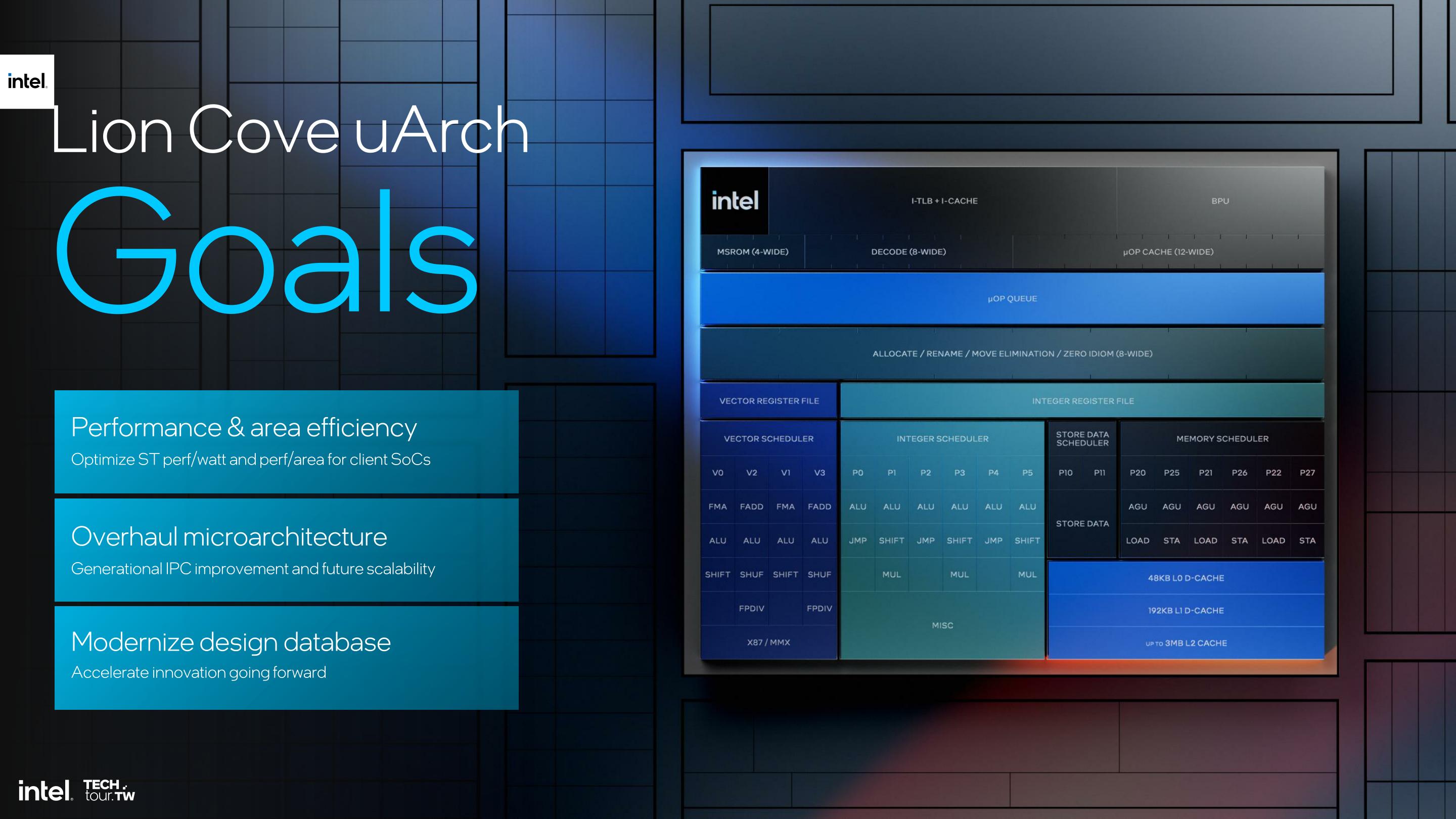
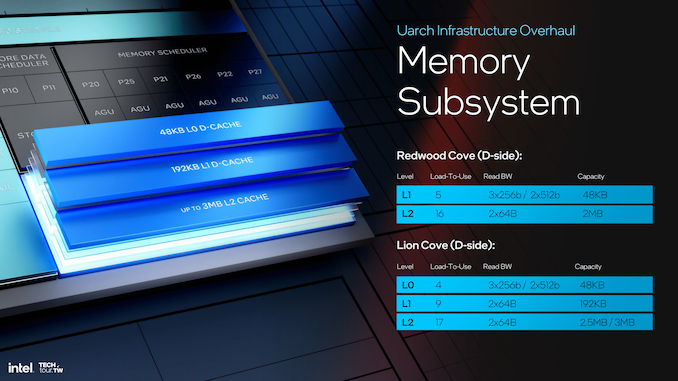

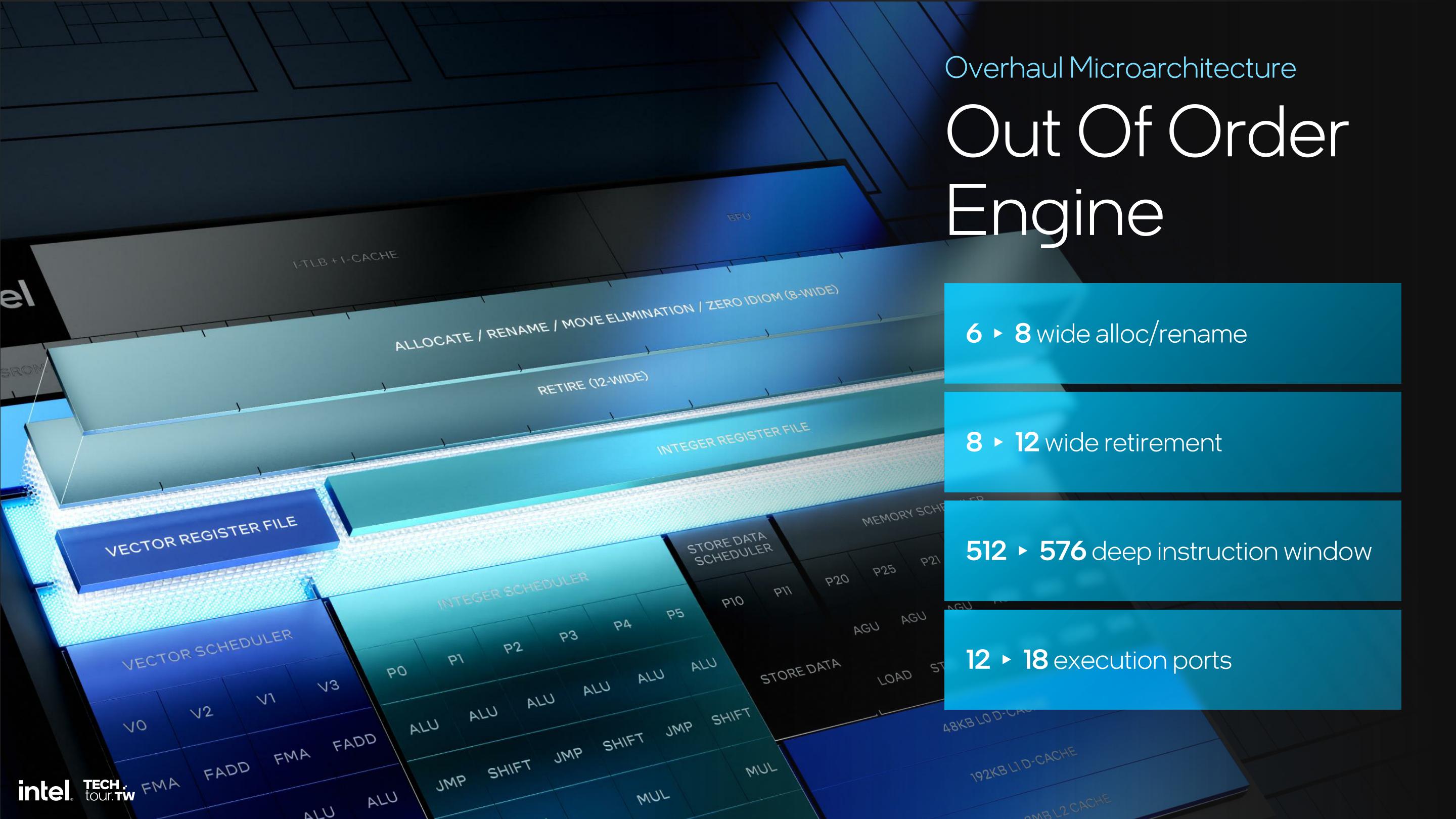

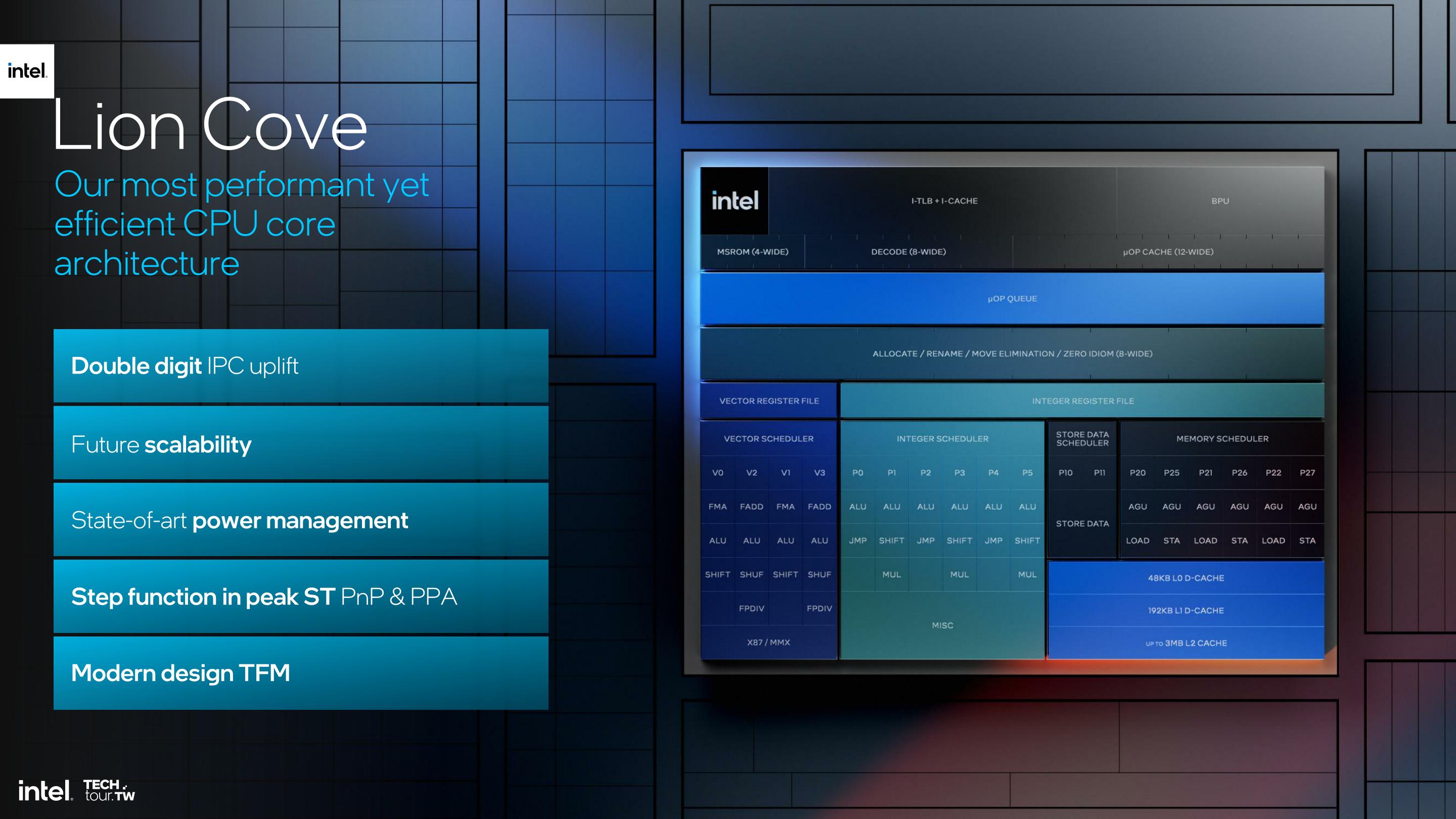
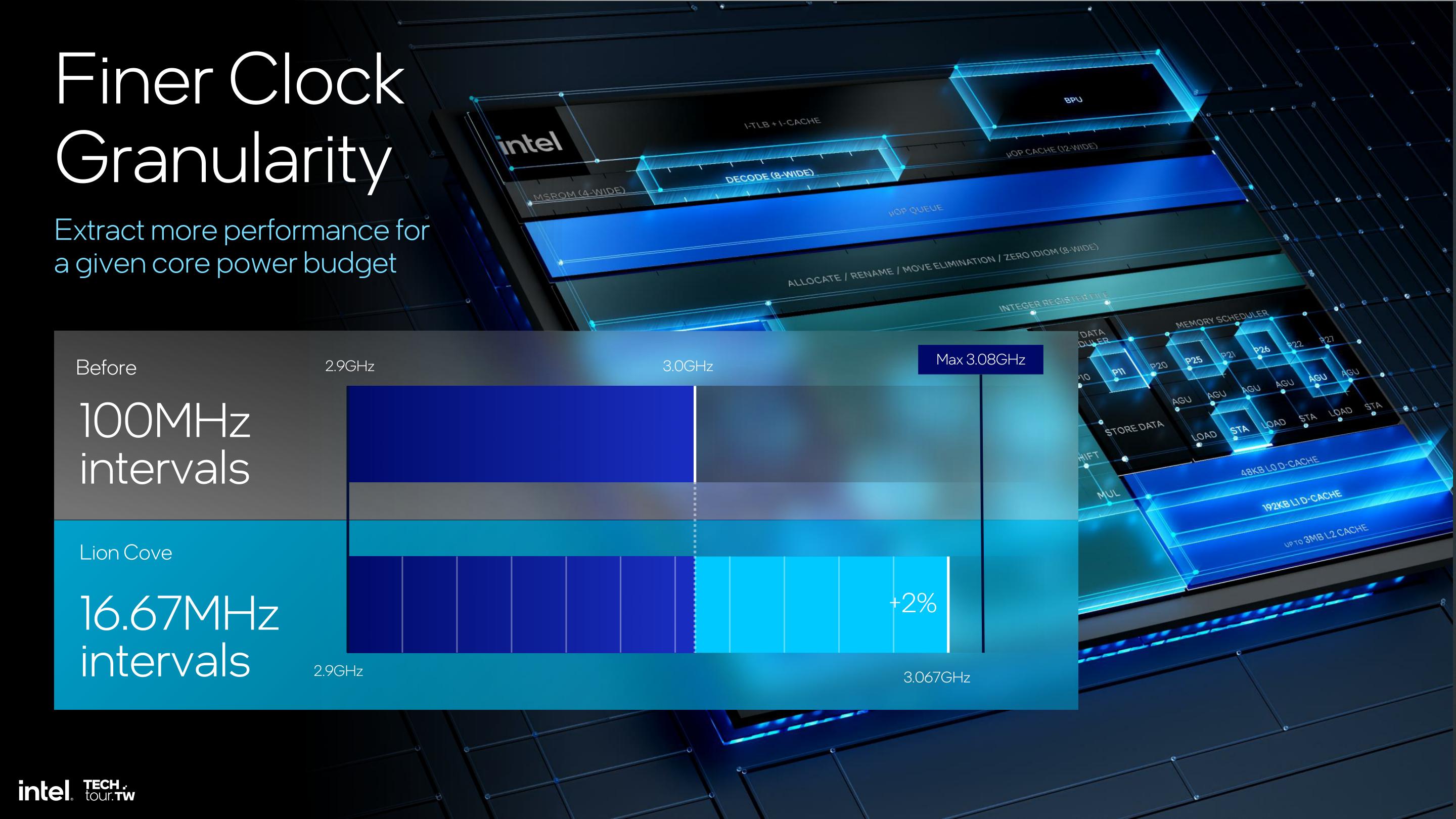








91 Comments
View All Comments
Bruzzone - Thursday, June 6, 2024 - link
Thanks BushLin, I also find all the engineering and end use perspectives interesting as a compliment resource specific market observations I triangulate for common perspective and some not so common perspectives from time to time.My full AMD workstation, desktop and mobile what's selling in the last 6 weeks report is now posted at Seeking Alpha.
I posted here in comment string and just look down comments to the pointer and the full report is easily downloadable. There is also a pointer within the downloadable report itself to the same Intel data last eight weeks.
https://seekingalpha.com/article/4697165-computex-...
Mike Bruzzone, Camp Marketing Reply
lmcd - Wednesday, June 12, 2024 - link
if you don't understand how inventory affects pricing then stick to reddit Replyballsystemlord - Wednesday, June 5, 2024 - link
In answer to your question, "It's worth the wait to Lunar and Arrow?"In terms of Intel's CPU/GPU performance, I doubt it.
In terms of power efficiency, they might have caught up. We'll have to wait for reviews. Only partially refreshing the screen should lead to a nice performance improvement and/or efficiency improvement of the GPU.
In terms of QoL improvements, it looks like Intel went all out for this new generation. In the following statements, I'm assuming that Intel's able to deliver. Having multiple TB4 ports is useful. Having TB4 with the ability to transfer files is also useful. So is better Wi-Fi. If anything, this might be *the* killer feature of the series. Likewise, VVC, assuming it's not badly licenced, should prove useful. I wonder if VVC is supported by their Quicksync encoder...
Don't misunderstand me, I appreciate what you've said above. But I really don't see this gen failing badly unless AMD/Qualcomm can equal them in terms of useful features. Reply
Bruzzone - Thursday, June 6, 2024 - link
Ballsystemlord,I also think Intel's on it way back to mobile efficiency. While Meteor is ramping, I perceive OEMs from channel data and enterprise IT especially Intel shops on 'applications utility' value, and validation, waiting for Lunar / Arrow and or Strix. Granite Ridge I see facing an AM5 saturation issue and there is sooo much Raphael and Vermeer in the channel to clear R9K price will likely be held up while Raptor/Alder and Raphael/Vermeer nose dive on channel liquidation for capital reclaim to buy new like q4 into first half 2025.
From the channel data AMD and Intel are dumping all over Snapdragon X whose launch is into a deflationary price cycle at least through q1 2025. Lots of downward price and margin pressure.
Me, I am looking for a new (used) laptop, more a desktop replacement than Office low power and AI does not matter to me currently. I was interested in a used Tiger Octa or Cezanne H_ with MXM GPU but waiting a wee bit more because laptop prices including gaming are in a nose dive.
Means I'll be able to move up to new 13th Raptor in overage supply condition or used Alder or Rembrandt H with minimally Ampere. AMD Cezanne and Rembrandt and 13th and 12th pricing just let go and it get's better into q4. See my Seeking Alpha report on supply, trade-in and sales trend pointed to above.
mb Reply
GeoffreyA - Thursday, June 6, 2024 - link
Though my computer is all right, I'd like to upgrade to Cezanne or Renoir, either 5600G or 4600G. (It will likely be the latter because of motherboard woes.) Here, the prices have been stuck for ages. Do you think they'll ever drop? Replyballsystemlord - Thursday, June 6, 2024 - link
GeoffreyA, I'm not involved with the markets like Mr. Bruzzone, but my recent experience with trying to get a GPU for 4 years in a row says, "Yes, prices will go back down." ReplyGeoffreyA - Friday, June 7, 2024 - link
Thanks. It's just puzzling because I don't understand the markets and economic side of things too well. Replylmcd - Wednesday, June 12, 2024 - link
5600G and 4600G are weird parts because they're dependent on AMD's mobile positioning. The latter (4600G) isn't being manufactured anymore to my knowledge -- Renoir is useless now to AMD because it was supplanted in mobile by the updated Mendocino platform, which likely will never be brought to desktop. I am not sure pricing on the 4600G will ever make sense.5600G is Cezanne, which is still being manufactured for 7x30 series (or was until recently).
However, at this point Cezanne is 7nm and easily binned, but there is no direct 5600G replacement yet as AMD did not launch a 7000 series G product. The 8000G series (just announced) should push 5600G into clearance pricing. Reply
GeoffreyA - Thursday, June 13, 2024 - link
Thanks. Good explanation. I'd go for the 5600G, but my motherboard, B450 Tomahawk, apparently has issues with this very CPU, despite there being BIOS support for quite some time. Online, people haven't had a solution, and MSI says nothing. Replymode_13h - Thursday, June 6, 2024 - link
Hey, where's the rest of the slide deck? There are definitely some slides I've seen elsewhere that aren't featured in the article. I'm used to this site posting the entire slides at the end. Reply